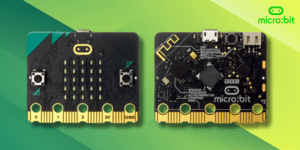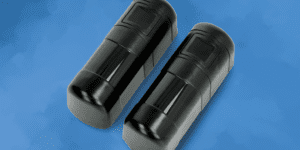Spis treści:
Many users of 3D printers cannot imagine their own workshop without this device. As technology evolves and more accurate, affordable and functional devices are created, the filament market is constantly changing and evolving as well. The most popular filaments are still PLA and ABS, the former being non-toxic and melting at lower temperatures, making it more suitable for amateur and home use. However, in order to overcome some of the limitations associated with the use of polymer-based materials, it was necessary to modify the traditionally used materials – and this is how the PLA Pro filament was born.
PLA filament in 3D printing – where it all began
To illustrate the “revolution” that was introduced with the Pro version, let’s first recall the main advantages of the PLA filament, i.e., polylactide. This biodegradable polymer was created before the war. It was used, for example, to make bottles, disposable plates, cups or bags and other packaging. And PLA is made from… fermented vegetable starch (though corn or sugar cane, among other things, are sometimes used as well).

Filaments obtained from these raw materials have a relatively low melting point – which means they can be used in most 3D printers, including those for amateur use, and even in 3D printing pens. They are also quite cheap and therefore much more economical to use. As a result, they perfectly meet the needs of those who create models for personal use at home, but also those who print often and a lot.
Similarities between PLA Pro and PLA filaments
PLA Pro is the successor of the popular polymer. It retains all the advantages for which users like PLA filaments so much: it is biodegradable, cost-effective and non-toxic. Printing with polylactide does not require the 3D printer to be closed in a special cover or to use special protection against inhalation of the vapours generated. PLA Pro filaments with their older “ancestors” also combine water resistance and durability – the material does not warp and it is not flammable. For many users of the popular polymer, its wide range of colours was a great advantage – in this respect, the PLA Pro filament is fully in line with its predecessor. You can find a full range of fiber colours on the market, and that is not all – the colour set is really interesting.
Differences between PLA Pro and PLA filaments
PLA Pro filament was designed to overcome the main drawbacks of its predecessor, or rather the inconvenience associated with the use of traditional polylactide. It is worth noting that for many users of 3D printers, these limitations were not a major problem – they only bothered professional or (some) semi-professional users. The first problem was the curling of the material on the edges of the printed models, which resulted from PLA’s tendency to shrink, and from the insufficient temperature of the heated bed in some printers. When using PLA Pro, this problem does not occur at all, besides – when we use this filament, the worktable usually does not need to be heated at all. The material itself provides sufficient adhesion to the surface.

The second disadvantage of PLA that has been eliminated in PLA Pro filaments is the relatively low resistance to higher temperatures (which can cause further problems during processing, e.g., drilling). In addition, prints made with PLA Pro filaments have almost 50% better impact resistance (i.e., the material’s resistance to cracking) than ABS filaments. And when finished models made with PLA Pro filaments are heated in the heating chamber, their impact resistance is twice as high as the resistance of ABS! In addition, models made of improved polylactide can be easily separated from the table, and if you treat PLA Pro as a substitute for styrene filaments, you will quickly discover that it makes it easier to maintain the desired dimensions of the printed element, since it does not shrink as the temperature drops, as styrene-based materials do. All these properties make PLA Pro filaments very popular with professionals who also appreciate another great advantage of these improved polymers: a much smoother, better finished surface of details.

Summary
PLA Pro filaments are an improved version of the popular PLA. They combine the advantages of polylactide and styrene filaments. They are non-toxic, biodegradable and virtually odourless, and because of their low price and moderate temperature requirements (from about 185 to 215*C) they are definitely easier to use even by complete amateurs who print at home. However, the fact that the print is amazingly precise makes PLA Pro filaments a product targeted at studios and workshops with higher professional requirements.
How useful was this post?
Click on a star to rate it!
Average rating 0 / 5. Vote count: 0
No votes so far! Be the first to rate this post.







